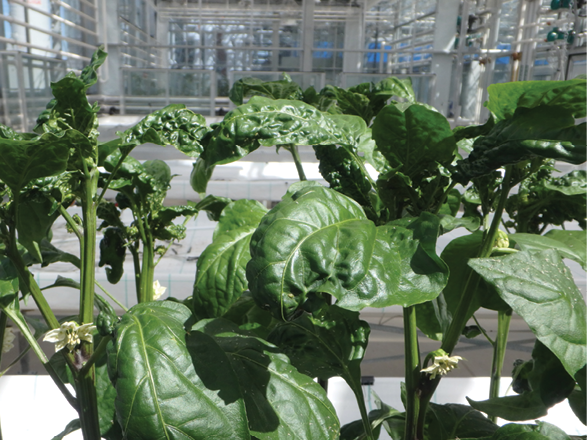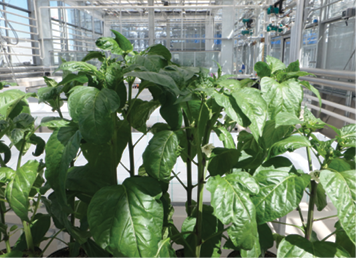

It was by chance that Taro Saito, a research technician at Vineland Research and Innovation Centre, found the mite that Vineland is currently studying as a potential breakthrough in biological control.
While walking in a park in St. Catharines, Ontario, Canada, Saito saw a mite feeding on another insect and decided to collect it for research. Back at the research center, he showed it to Dr. Michael Brownbridge, Vineland’s Director of Horticultural Production Systems. After some investigation, the two discovered that the mite — a member of the Anystis family — could be a good predator to combat pests in the greenhouse.
“The mite is a really good generalist predator,” Brownbridge says. “There’s a shortage of generalist predators for biological controls in North America. And you could say, ‘Why don’t we bring them in from Europe?’ The fact is that the regulatory bodies, which control the import of these natural enemies, will not allow non-native generalist predators to be brought into North America.”
So far, Vineland’s research indicates that the mite could be a major asset for greenhouse growers in Canada and the U.S. The mite has a broader prey range than anything else currently in use because it eats common pests such as thrips, aphids, mealybugs, whiteflies and twospotted spider mites, according to Brownbridge.
“None of the other predatory mites will do that,” he says. “They have a much narrower range.”

Brownbridge believes that discoveries like this are important for a simple reason: Finding new ways to combat pests in the greenhouse is one of the major challenges growers currently face. While there are some effective pesticides — and Brownbridge says pesticides have a role in an integrated pest management program — pests are becoming more and more resistant to chemicals. Each year, the number of effective pesticides drops, as many pests are naturally becoming resistant to chemicals. Biocontrol agents must be part of a more sustainable, realistic long-term plan.
“We should be using these first and not throwing them in as a last resort because our pesticides have failed,” says Brownbridge.
He doesn’t yet know if or when the mite Saito found will be available for widespread, public use. Early testing has yielded positive results and Vineland is working with an industry partner to establish whether the mite can be commerical. Testing must first be done to determine if the mite can be reared and then cost-effectively and easily harvested. If that happens, it could be available to growers in three to five years. “It’s always hard to say [how soon the mite will be available] — it’s like asking ‘how long is a piece of string?’ Brownbridge says. “At the moment, we are embarking down that path and I hope we can answer those questions within a few years.”
That’s not bad for a mite found by chance during a walk through the woods.

Explore the January 2017 Issue
Check out more from this issue and find you next story to read.
Latest from Greenhouse Management
- Passion grows progress
- Registration opens for Darwin Perennials Day
- U.S. Department of Labor finalizes farmworker protection rule
- Azo Root is now available from Harrell’s
- Bidens ferulifolia Blazing Glory
- Rob Hanifin joins Ridder North America as product specialist for climate screens
- The importance of measuring light
- Spigelia marilandica





